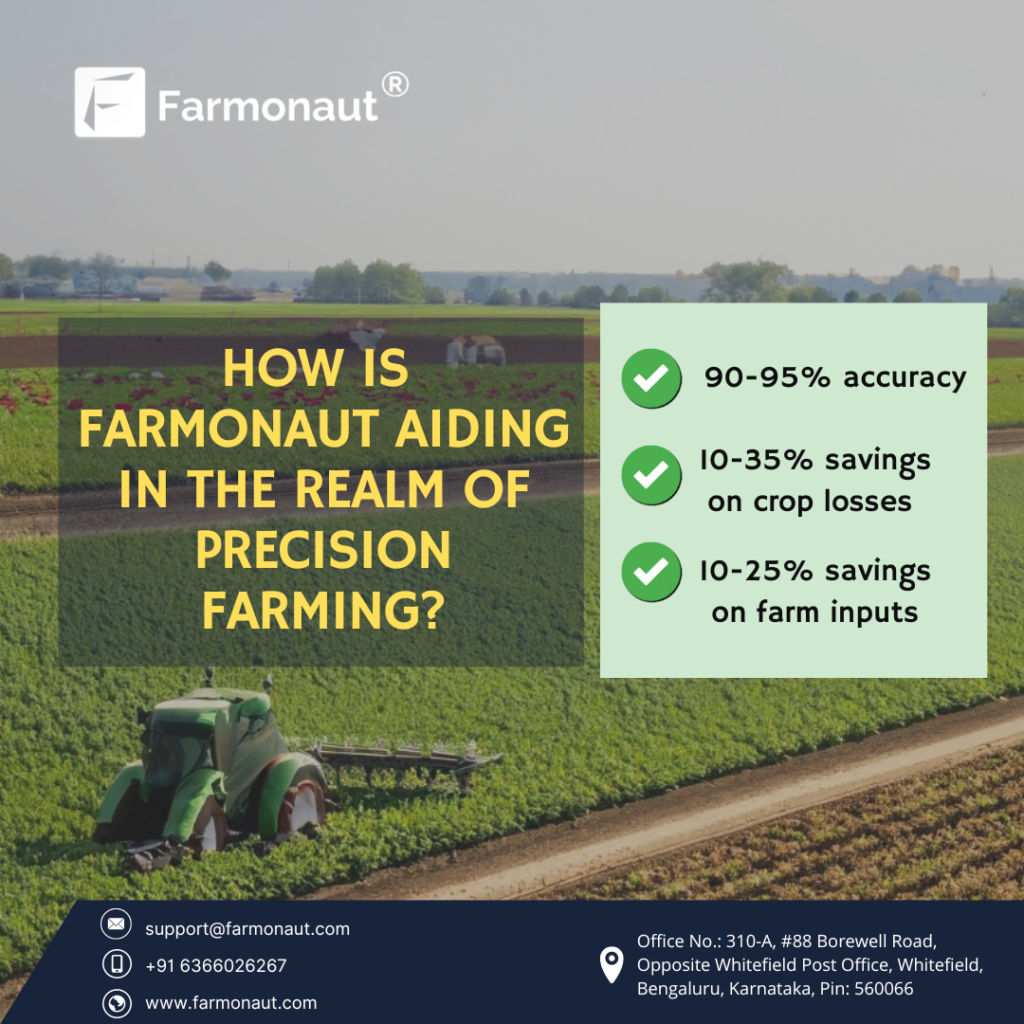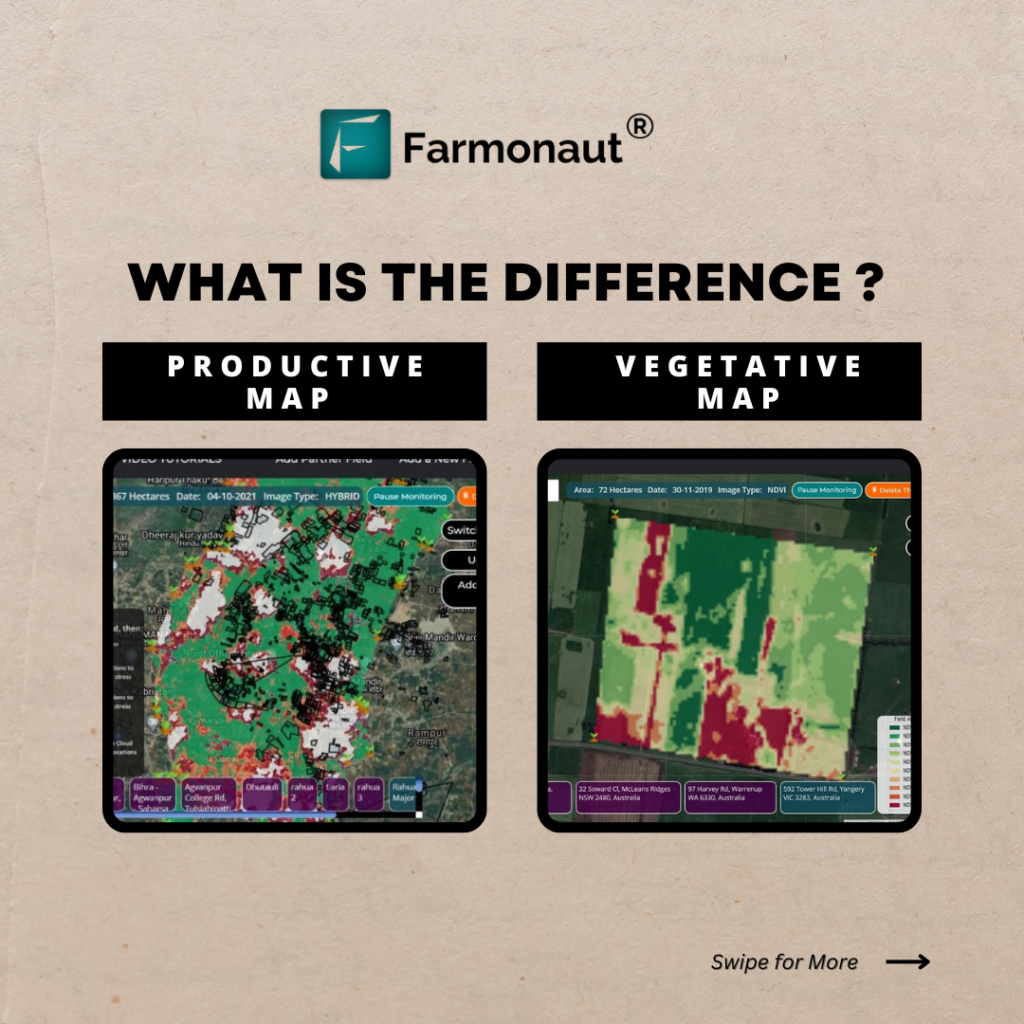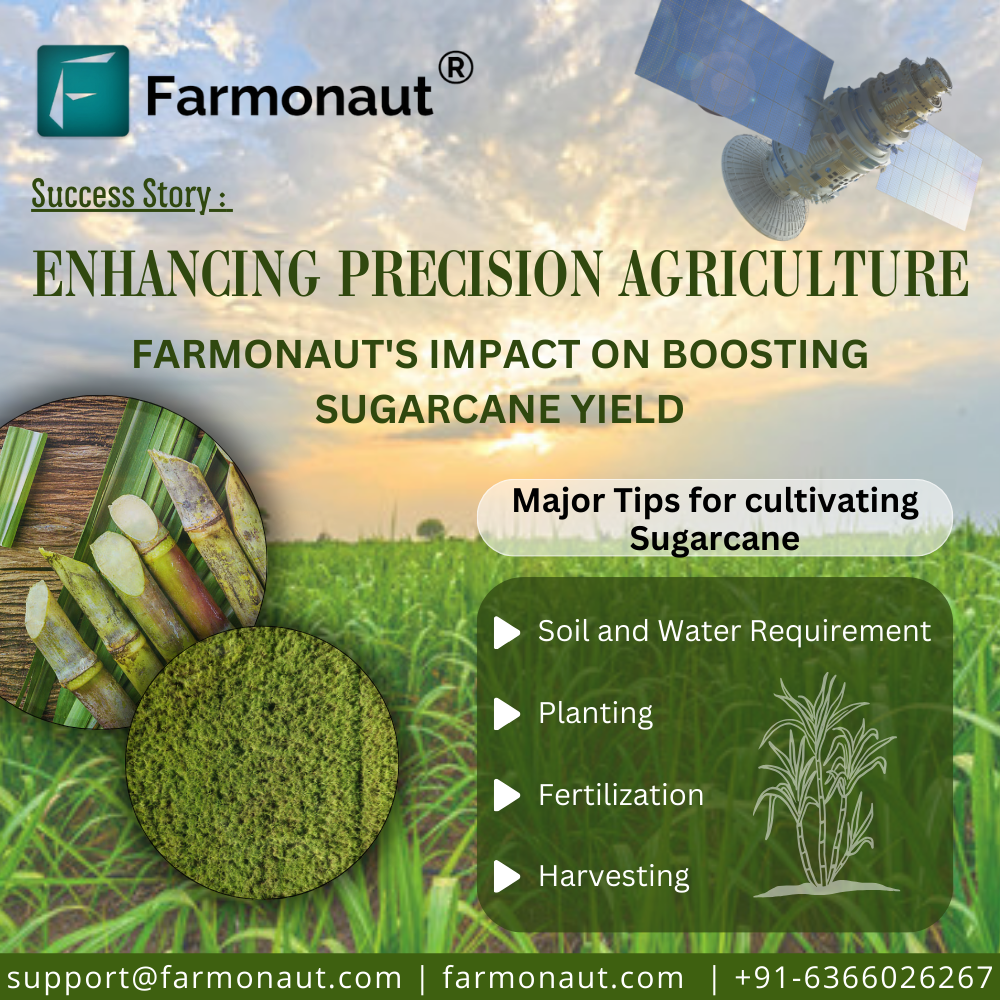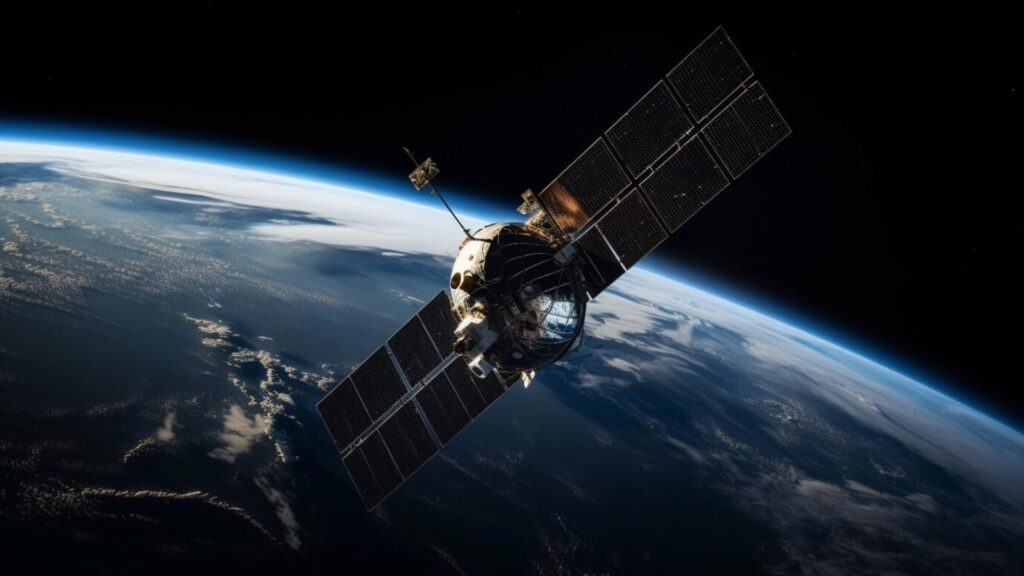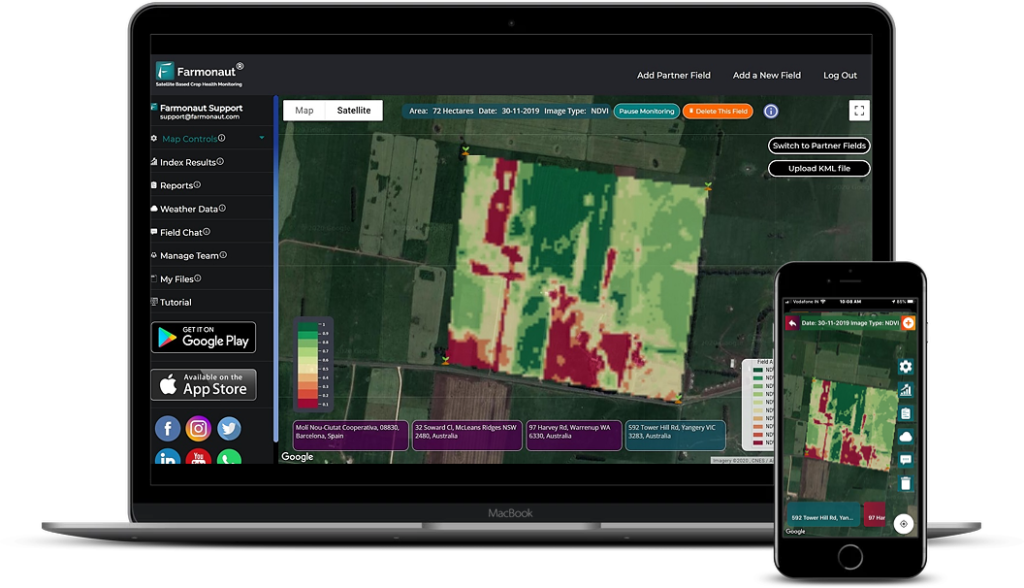Maximizing Crop Yields: Precision Agriculture Technology for Data-Driven Farm Management
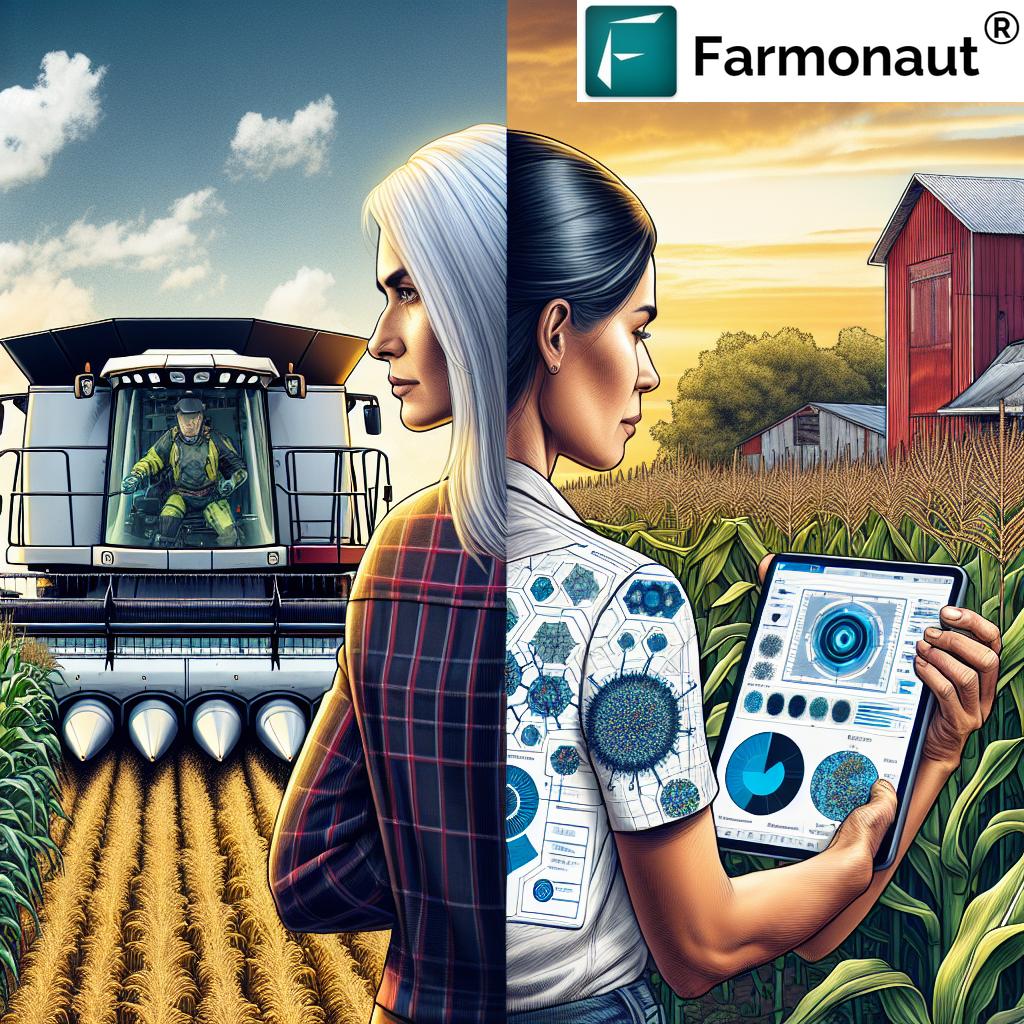
In today’s rapidly evolving agricultural landscape, the integration of advanced technologies and data-driven approaches has become crucial for maximizing crop yields and optimizing farm management. As we delve into the world of precision agriculture, we’ll explore how cutting-edge tools and techniques are revolutionizing the way farmers approach their fields, crops, and overall operations.
The Evolution of Precision Agriculture
Precision agriculture has come a long way since its inception. What started as basic GPS-guided machinery has now evolved into a sophisticated ecosystem of interconnected technologies that provide farmers with unprecedented insights into their fields and crops. Let’s take a closer look at how this evolution has transformed modern farming practices.
From Manual to Digital: The Shift in Farm Management
Traditionally, farmers relied heavily on manual observations, experience, and intuition to make decisions about their crops. While these methods have served agriculture well for centuries, they often fell short in addressing the complexities of modern farming. Today, we’re witnessing a significant shift towards digital solutions that offer more precise, data-driven approaches to farm management.
- Field Monitoring: Instead of walking fields to assess crop health, farmers now have access to satellite imagery and drone technology that provide comprehensive views of their entire farm.
- Yield Prediction: Advanced algorithms and machine learning models have replaced educated guesses, offering more accurate forecasts of crop yields.
- Resource Management: Digital tools help optimize the use of water, fertilizers, and pesticides, reducing waste and environmental impact.
The Role of Data in Modern Agriculture
At the heart of precision agriculture lies data. The ability to collect, analyze, and act upon vast amounts of agricultural data has transformed farming from an art into a science. Here’s how data is driving the agricultural revolution:
- Field-Level Insights: Sensors and IoT devices collect real-time data on soil moisture, temperature, and nutrient levels, allowing for targeted interventions.
- Crop Performance Analysis: Historical and current data enable farmers to analyze crop performance across different seasons and conditions, informing future decisions.
- Predictive Analytics: By leveraging big data and AI, farmers can predict potential issues before they arise, from pest infestations to weather-related risks.
Key Technologies Driving Precision Agriculture
As we continue to innovate in the field of agriculture, several key technologies have emerged as game-changers. These tools are not only enhancing productivity but also promoting sustainability in farming practices.
Satellite Imagery and Remote Sensing
Satellite technology has revolutionized the way we monitor and manage agricultural lands. With the ability to capture high-resolution images of vast areas, satellites provide farmers with invaluable insights into their fields.
- Crop Health Monitoring: Multispectral imagery allows for the assessment of crop health through vegetation indices like NDVI (Normalized Difference Vegetation Index).
- Field Boundary Mapping: Precise delineation of field boundaries helps in accurate area calculation and management planning.
- Yield Estimation: Satellite data combined with ground truth information enables more accurate yield predictions.
At Farmonaut, we leverage advanced satellite technology to provide farmers with up-to-date imagery and analysis of their fields. Our platform integrates this data to offer actionable insights for improved farm management.
IoT and Sensor Technology
The Internet of Things (IoT) and sensor technology have brought a new level of precision to agriculture. By deploying various sensors across fields, farmers can now monitor multiple parameters in real-time.
- Soil Moisture Sensors: These help optimize irrigation by providing accurate data on soil water content.
- Weather Stations: On-farm weather stations offer localized climate data for more precise decision-making.
- Crop Sensors: Mounted on machinery or drones, these sensors can detect crop health issues, nutrient deficiencies, or pest infestations.
Our Farmonaut system integrates data from various sensors to provide a comprehensive view of field conditions, enabling farmers to make informed decisions about crop management.
Variable Rate Technology (VRT)
Variable Rate Technology represents a significant advancement in precision agriculture, allowing for the targeted application of inputs based on specific field conditions.
- Fertilizer Application: VRT enables the application of fertilizers at varying rates across a field, optimizing nutrient use efficiency.
- Seeding: Precision planters can adjust seeding rates based on soil conditions and yield potential maps.
- Pesticide Application: Targeted spraying reduces chemical use while maintaining effective pest control.
Through our platform, farmers can generate variable rate prescriptions based on satellite imagery and field data, ensuring optimal input use across their fields.
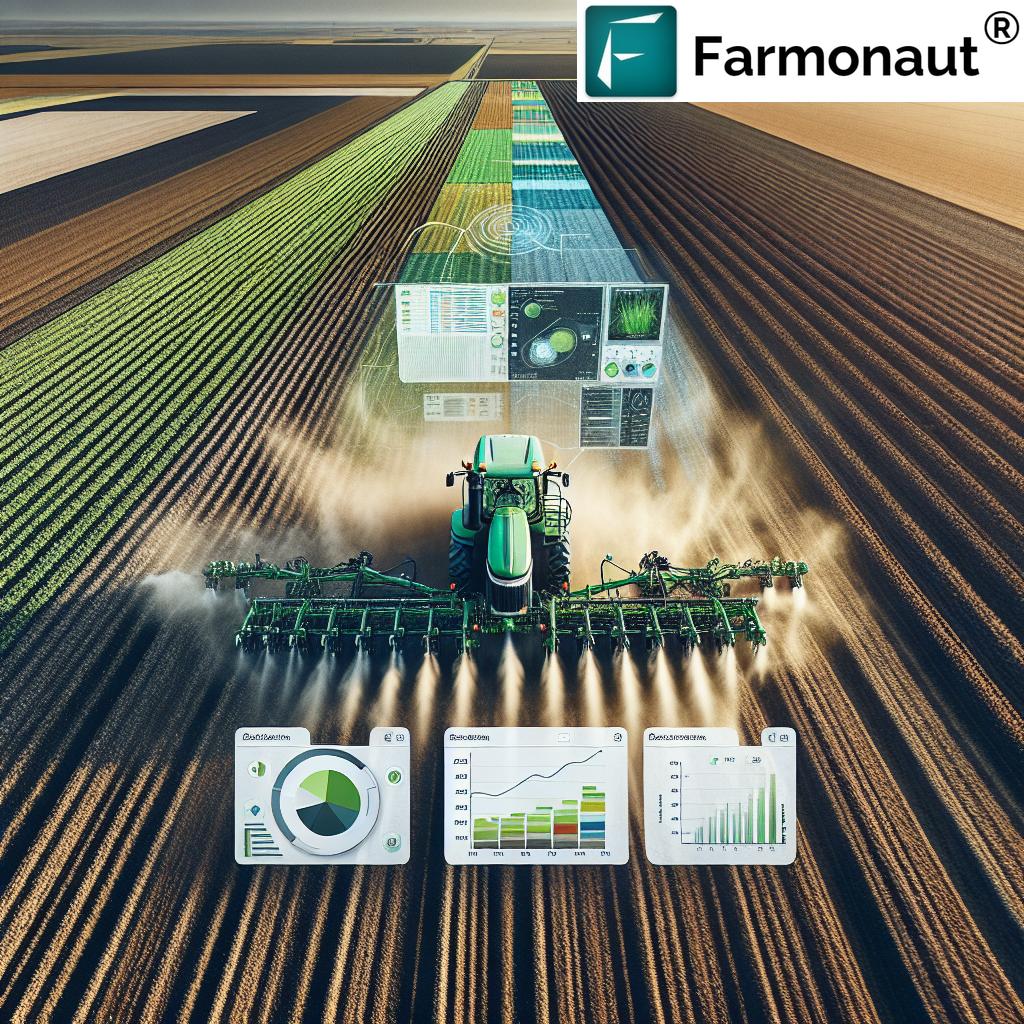
Data Management and Analysis in Agriculture
The influx of data in modern agriculture has created both opportunities and challenges. Effective data management and analysis are crucial for deriving actionable insights and maximizing the benefits of precision agriculture.
Collecting and Organizing Agricultural Data
The first step in leveraging agricultural data is proper collection and organization. This involves:
- Field Data Collection: Gathering information on soil types, crop varieties, planting dates, and historical yields.
- Sensor Data Integration: Incorporating data from various sensors and IoT devices deployed across the farm.
- Weather Data: Collecting and storing local and regional weather information for correlation with crop performance.
Our Farmonaut platform offers robust data collection tools, allowing farmers to easily input and organize their agricultural data in one centralized location.
Data Analysis and Visualization
Once data is collected, the next crucial step is analysis and visualization. This process transforms raw data into meaningful insights that can guide farm management decisions.
- Crop Performance Analysis: Evaluating yield data against various factors like soil type, weather conditions, and management practices.
- Field Health Visualization: Creating visual representations of crop health across fields using satellite imagery and vegetation indices.
- Trend Analysis: Identifying patterns and trends in crop performance over time to inform long-term strategies.
We provide advanced analytics and visualization tools that help farmers interpret complex data sets and make informed decisions about their operations.
Predictive Analytics in Agriculture
The power of predictive analytics is transforming agriculture by enabling farmers to anticipate future outcomes based on historical and real-time data.
- Yield Forecasting: Using machine learning models to predict crop yields based on various factors.
- Pest and Disease Prediction: Analyzing weather patterns and crop conditions to forecast potential pest or disease outbreaks.
- Resource Optimization: Predicting resource needs to optimize irrigation, fertilization, and other inputs.
Our AI-driven advisory system, Jeevn AI, leverages predictive analytics to provide personalized recommendations for crop management, helping farmers stay ahead of potential challenges.
Precision Planting and Seeding
Precision planting is a cornerstone of modern agriculture, enabling farmers to optimize seed placement and density for maximum yield potential.
Advanced Planting Technologies
Today’s planting equipment is equipped with sophisticated technologies that allow for unprecedented accuracy and control:
- GPS-Guided Planters: Ensure precise seed placement and maintain straight rows across fields.
- Variable Rate Seeding: Adjust seeding rates on-the-go based on soil conditions and yield potential maps.
- Automatic Section Control: Prevents over-planting by automatically shutting off planter sections in areas that have already been seeded.
Optimizing Seed Selection and Placement
Choosing the right seed and placing it correctly is crucial for maximizing yield potential:
- Hybrid Selection: Analyzing field data to select the best-performing corn or soybean hybrids for specific field conditions.
- Planting Depth Control: Adjusting seed depth based on soil moisture and temperature to ensure optimal germination.
- Population Management: Fine-tuning plant populations based on historical yield data and soil fertility maps.
Our platform integrates field data and performance analytics to help farmers make informed decisions about seed selection and planting strategies.
Crop Monitoring and Health Assessment
Continuous monitoring of crop health throughout the growing season is essential for identifying and addressing issues promptly.
Remote Sensing for Crop Health
Remote sensing technologies provide valuable insights into crop health without the need for extensive field scouting:
- Multispectral Imagery: Captures data across various light spectrums to assess plant health and vigor.
- Thermal Imaging: Detects temperature variations in crops, which can indicate stress or disease.
- NDVI Analysis: Measures vegetation density and health, helping identify areas of concern within fields.
Farmonaut’s satellite-based crop health monitoring system utilizes these technologies to provide farmers with regular updates on their crop’s condition.
In-Field Sensors and Monitoring
Complementing remote sensing, in-field sensors offer real-time data on various crop and environmental parameters:
- Soil Moisture Probes: Monitor water availability at different soil depths to optimize irrigation.
- Weather Stations: Provide localized climate data for more accurate decision-making.
- Leaf Sensors: Measure leaf temperature and moisture to detect early signs of plant stress.
Our platform integrates data from various in-field sensors, providing a comprehensive view of crop health and field conditions.
Precision Irrigation and Water Management
Efficient water use is critical for sustainable agriculture, especially in regions facing water scarcity or drought conditions.
Smart Irrigation Systems
Advanced irrigation technologies help optimize water use while maintaining optimal crop growth:
- Soil Moisture-Based Irrigation: Automatically triggers irrigation based on real-time soil moisture data.
- Weather-Integrated Systems: Adjust irrigation schedules based on local weather forecasts and evapotranspiration rates.
- Variable Rate Irrigation: Applies different amounts of water to different parts of the field based on crop needs and soil conditions.
Water Use Efficiency Analysis
Analyzing water use efficiency helps farmers optimize their irrigation strategies:
- Water Balance Modeling: Calculates crop water requirements based on various factors including climate, soil type, and crop stage.
- Irrigation Performance Metrics: Tracks key performance indicators like water use efficiency and crop water productivity.
- Drought Stress Prediction: Uses climate data and crop models to forecast potential drought stress, allowing for proactive management.
Our platform provides tools for water use analysis and irrigation planning, helping farmers make the most of their water resources.
Nutrient Management and Soil Health
Proper nutrient management is essential for optimizing crop yields while maintaining soil health and minimizing environmental impact.
Precision Fertilizer Application
Advanced technologies enable more precise and efficient fertilizer application:
- Variable Rate Fertilization: Applies different rates of fertilizer across the field based on soil fertility maps and crop needs.
- Split Application: Distributes fertilizer applications throughout the growing season to match crop uptake patterns.
- Sensor-Based Application: Uses real-time crop sensors to adjust fertilizer rates on-the-go.
Soil Health Monitoring
Maintaining soil health is crucial for long-term agricultural sustainability:
- Regular Soil Testing: Analyzes soil nutrient levels, pH, and organic matter content to guide management decisions.
- Cover Crop Management: Utilizes satellite imagery to assess cover crop performance and biomass production.
- Soil Compaction Monitoring: Uses penetrometer data and yield maps to identify and address soil compaction issues.
Our platform integrates soil health data with other field information to provide comprehensive recommendations for nutrient management and soil improvement.
Pest and Disease Management
Effective pest and disease management is critical for protecting crop yields and quality.
Integrated Pest Management (IPM)
IPM combines various strategies to manage pests effectively while minimizing environmental impact:
- Pest Monitoring: Uses traps, sensors, and satellite imagery to detect and track pest populations.
- Biological Control: Incorporates natural predators and beneficial insects into pest management strategies.
- Targeted Pesticide Application: Uses precision spraying technologies to apply pesticides only where and when needed.
Disease Prediction and Management
Advanced technologies help farmers stay ahead of potential disease outbreaks:
- Disease Modeling: Uses weather data and crop conditions to predict the likelihood of disease development.
- Early Detection: Employs multispectral imagery and AI to identify early signs of disease in crops.
- Fungicide Optimization: Provides recommendations for timing and rates of fungicide applications based on disease risk assessments.
Our AI-driven advisory system incorporates pest and disease prediction models to provide timely alerts and management recommendations to farmers.
Harvest Management and Yield Analysis
Efficient harvest management and thorough yield analysis are crucial for maximizing profits and planning for future seasons.
Precision Harvesting Technologies
Modern harvesting equipment is equipped with advanced technologies to optimize the harvesting process:
- Yield Monitors: Provide real-time yield data as crops are harvested, creating detailed yield maps.
- Automatic Guidance Systems: Ensure precise navigation through fields, reducing overlap and improving efficiency.
- Grain Quality Sensors: Monitor grain moisture and quality during harvest, allowing for better storage and marketing decisions.
Post-Harvest Data Analysis
Analyzing harvest data provides valuable insights for future crop management:
- Yield Map Analysis: Identifies high and low-yielding areas within fields to guide future management decisions.
- Input Efficiency Evaluation: Assesses the effectiveness of various inputs (fertilizers, seeds, pesticides) in terms of yield response.
- Profitability Mapping: Combines yield data with input costs to create field profitability maps.
Our platform offers advanced tools for harvest data analysis, helping farmers derive actionable insights from their yield data.
Farm Management Software and Decision Support Tools
Integrating various data sources and technologies, farm management software plays a crucial role in modern agriculture.
Features of Advanced Farm Management Platforms
Comprehensive farm management platforms offer a wide range of features to support decision-making:
- Field Mapping and Planning: Create detailed field maps and plan crop rotations.
- Data Integration: Combine data from various sources (satellites, sensors, machinery) into a unified platform.
- Record Keeping: Maintain detailed records of field operations, inputs, and yields.
- Financial Management: Track expenses, revenues, and profitability at the field and farm level.
- Compliance Management: Ensure adherence to regulatory requirements and sustainability standards.
AI-Powered Decision Support
Artificial Intelligence is revolutionizing agricultural decision-making:
- Predictive Analytics: Forecast yields, pest pressures, and market conditions to inform management decisions.
- Recommendation Engines: Provide personalized recommendations for crop management based on field-specific data.
- Scenario Analysis: Allow farmers to explore the potential outcomes of different management strategies.
Our Jeevn AI advisory system leverages advanced AI algorithms to provide personalized, data-driven recommendations to farmers.
The Future of Precision Agriculture
As technology continues to evolve, the future of precision agriculture holds exciting possibilities.
Emerging Technologies
Several cutting-edge technologies are poised to further transform agriculture:
- Autonomous Machinery: Self-driving tractors and harvesters that can operate 24/7 with minimal human intervention.
- Advanced Robotics: Robots capable of performing tasks like selective harvesting, precision weeding, and crop monitoring.
- Gene Editing: CRISPR and other gene-editing technologies to develop crops with enhanced traits for yield, resilience, and nutrition.
- Blockchain in Agriculture: Enhancing traceability and transparency in the food supply chain.
Sustainable Agriculture and Climate Resilience
Precision agriculture will play a crucial role in addressing global challenges:
- Carbon Sequestration: Leveraging precision farming techniques to enhance soil carbon storage and mitigate climate change.
- Water Conservation: Developing more advanced irrigation systems to maximize water use efficiency in the face of increasing water scarcity.
- Biodiversity Preservation: Using precision technologies to minimize the environmental impact of agriculture and protect biodiversity.
At Farmonaut, we’re committed to developing technologies that not only enhance farm productivity but also promote sustainability and climate resilience.
Comparison: Traditional Farming vs. Farmonaut System
| Aspect | Traditional Farming | Farmonaut System |
|---|---|---|
| Field Monitoring | Manual scouting, time-consuming | Satellite-based monitoring, real-time updates |
| Yield Prediction | Based on experience, less accurate | AI-powered predictions, high accuracy |
| Crop Health Analysis | Visual inspection, subjective | Multispectral analysis, objective data |
| Variable Rate Prescriptions | Uniform application across fields | Customized prescriptions based on field variability |
| Data Visualization | Limited, mostly paper-based records | Advanced visualization tools, interactive maps |
| Decision Support | Relies heavily on farmer’s experience | AI-driven recommendations, data-backed decisions |
Frequently Asked Questions (FAQ)
Q: What is precision agriculture?
A: Precision agriculture is an approach to farm management that uses information technology and data analysis to optimize crop production. It involves collecting detailed data about field conditions, crop health, and environmental factors to make more precise and efficient farming decisions.
Q: How does satellite imagery benefit farmers?
A: Satellite imagery provides farmers with a comprehensive view of their fields, allowing them to monitor crop health, detect issues early, and make informed decisions about irrigation, fertilization, and pest control. It’s particularly useful for managing large areas and identifying variability within fields.
Q: What is variable rate technology (VRT)?
A: Variable rate technology is a method of applying different rates of inputs (such as fertilizers, seeds, or pesticides) to different areas within a field based on specific needs. It helps optimize resource use, reduce waste, and potentially increase yields.
Q: How does AI contribute to agricultural decision-making?
A: AI in agriculture can analyze vast amounts of data from various sources to provide insights and recommendations. It can predict crop yields, detect diseases early, optimize resource use, and help farmers make data-driven decisions to improve productivity and sustainability.
Q: What are the benefits of using farm management software?
A: Farm management software helps streamline operations by integrating various aspects of farm management into a single platform. Benefits include improved record-keeping, better data analysis, easier compliance management, and more informed decision-making.
Q: How can precision agriculture contribute to sustainability?
A: Precision agriculture promotes sustainability by optimizing resource use, reducing waste, and minimizing environmental impact. It allows for more efficient use of water, fertilizers, and pesticides, which can lead to reduced runoff and greenhouse gas emissions.
Q: What is the role of IoT in modern farming?
A: The Internet of Things (IoT) in farming involves using connected sensors and devices to collect real-time data about field conditions, crop health, and equipment performance. This data helps farmers monitor their operations more closely and make timely, informed decisions.
Q: How does Farmonaut’s system differ from traditional farming methods?
A: Farmonaut’s system leverages advanced technologies like satellite imagery, AI, and data analytics to provide more precise, data-driven insights compared to traditional farming methods. It offers real-time monitoring, predictive analytics, and personalized recommendations that go beyond what’s possible with conventional approaches.
Subscribe to Farmonaut
Ready to transform your farming operations with cutting-edge precision agriculture technology? Subscribe to Farmonaut today and unlock the power of data-driven farm management.
By embracing precision agriculture and leveraging the power of data, we can work together to build a more productive, sustainable, and resilient agricultural future. Join us at Farmonaut as we continue to innovate and develop solutions that empower farmers around the world.
For more information about our services and to explore our API documentation, visit:
Together, let’s cultivate a smarter, more sustainable future for agriculture.


